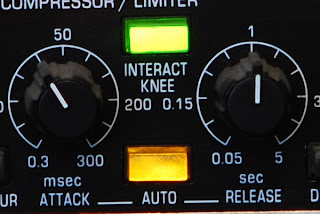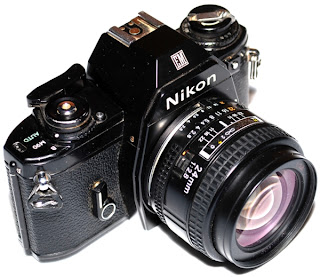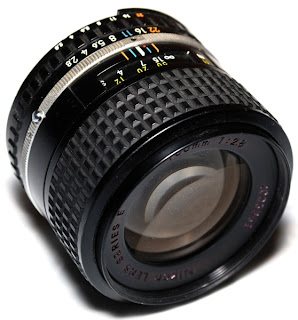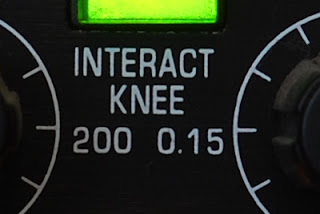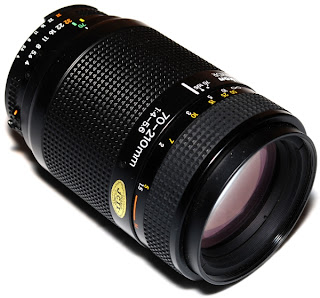The
Gary Fong Lightsphere, an interesting attachment for your on camera flash that gives the promise of studio lighting anywhere!
What it is, is a dome that that attaches to your flash to soften the light. It comes in "Cloud" or "Clear" versions and you can have several choices of domes that cover the top. The one I am using here is the
Lightsphere Universal Cloud with a Cloud dome.
INDOORS: Flash photography indoors presents a problem, you have to balance the light from the flash with the available light in the room. If your indoor setting is lit with incandescent light and you are using a flash, you need to cover the flash with a filter to balance the "daylight" flash to the incandescent room lighting. If you do not and you light the subject the subject will be lit (most likely with the correct color balance since your camera will Auto WB to daylight) but the surroundings of the the room will turn red orange. Same with fluorescent except that the surroundings will be more green. The
Lightsphere can help you overcome this by for the most part overpowering the ambient room lighting. The big dome on the flash with the flash standing straight up blasts the entire room with a soft daylight balanced light, and it really works. The downside is the amount of power it takes. Even in a normal size living room so much light is used to light the entire room that you are running near full power blasts which eats up batteries. Shooting one wedding reception I shot through 2 full sets of batteries and part of a 3rd, so it uses a lot.
OUTDOORS: Flash is a must for shooting people outdoors. At short distances with the flash head aimed forward instead of up it can do the trick to give a nice soft light, but I am not sure that the light produced is any softer than the SB-600 provides with the built-in diffuser. If you have your subject at a decent distance you need remove it, it wont let the light make it. You can leave it on if you already have it on and just pull the dome off it, that is how I do it if I already have it attached. Difficult to find a place to put the dome though, if I have jeans on I can usually get it into my back pocket, just don't sit on it.
So down to business, I have shot numerous shots for comparison and am putting them in what I think is the worst to first order. We have bounce flash at 90 and 45 degrees with and without diffuser, straight on with and without diffuser, a full studio light set up, and the
Gary Fong Lightsphere. All of these have been shot with a 100mm f/2.8 Series E lens. The aperture has been varied as needed to get proper exposure, but we are looking at lighting in general, so for our comparisons here it is irrelevant. Lets see how it fares!
#8 Here poor Karli is just being blasted head on with the SB-600. The light is harsh and there is a very crisp shadow on the backdrop from the flash.
 |
Camera: Nikon D80
Lens: 100mm f/2.8 Series E
Focal Length: 100mm
Shutter: 1/60
Aperture: f/2.8
ISO: 100
Flash: SB-600 (M 1/16)
|
#7 Dropping the diffuser down but still pointed directly at her made it a little better, but not much. Here features are softend and the shadows are less harsh, but still not great.
 |
Camera: Nikon D80
Lens: 100mm f/2.8 Series E
Focal Length: 100mm
Shutter: 1/60
Aperture: f/2.8
ISO: 100
Flash: SB-600 (M 1/2 w/Diffuser)
|
#6 Oddly the 45 degree bounce with diffuser is next. As we continue we see the light getting softer and more attractive and we are starting to get a more attractive photo here. Obviously the shot would be helped by having an uplight lighting the backdrop to get rid of the shadow, but if we are going through that effort then why not get out the studio lights.
 |
Camera: Nikon D80
Lens: 100mm f/2.8 Series E
Focal Length: 100mm
Shutter: 1/60
Aperture: f/2.8
ISO: 100
Flash: SB-600 (M 1/1 w/Diffuser 45 degree bounce)
|
#5 Here is the 45 degree without diffuser. I really expected 5 and 6 to be reversed, and maybe this was due to the reduced power needed to run without the diffuser, but I like this one better. There is even less shadow behind, maybe the tighter light source helps get it lit better. I may play with this a bit more in my studio and see what comes of it.
 |
Camera: Nikon D80
Lens: 100mm f/2.8 Series E
Focal Length: 100mm
Shutter: 1/60
Aperture: f/2.8
ISO: 100
Flash: SB-600 (M 1/1 45 degree bounce)
|
#4 And for my eye, they swap around again here. This is the non-diffused flash at 90 degree bounce. As the story continues to go, the lighting gets more even as we go. However, one note to look at, the lighting is noticeably picking up color from the room paint which is brown.
 |
Camera: Nikon D80
Lens: 100mm f/2.8 Series E
Focal Length: 100mm
Shutter: 1/60
Aperture: f/2.8
ISO: 100
Flash: SB-600 (M 1/1 90 degree bounce)
|
#3 Not much different from #4 is the 90 degree bounce with diffuser. To my eye this is just a little better than the prior shot. Again, getting color cast from the room paint.
 |
Camera: Nikon D80
Lens: 100mm f/2.8 Series E
Focal Length: 100mm
Shutter: 1/60
Aperture: f/2.8
ISO: 100
Flash: SB-600 (M 1/1 w/ diffuser 90 degree bounce)
|
#2 The
Gary Fong Lightsphere. As you can see here, the lighting is still as smooth and even as #3, maybe even a little more so, but the color cast from bouncing has gone away even though the flash head is in the 90 degree bounce position. Since most of the bounce is happening off the dome of the Lightsphere you wont pick it up as much.
 |
Camera: Nikon D80
Lens: 100mm f/2.8 Series E
Focal Length: 100mm
Shutter: 1/60
Aperture: f/2.8
ISO: 100
Flash: SB-600 (M 1/1 Gary Fong Lightsphere)
|
#1 And of course, here is why studio strobes still sell. Nice even lighting across Karli, no color casts, and no distracting shadows. But we can't drag strobes everywhere, in fact, event shooting will demand portability, and in those cases the Gary Fong Lightsphere can be the ticket to getting great shots.
 |
Camera: Nikon D80
Lens: 100mm f/2.8 Series E
Focal Length: 100mm
Shutter: 1/60
Aperture: f/8
ISO: 100
Flash: 2 500 w/s Studio Strobes w/ Brolly Boxes
|
So my final thought on it? Flash photography is the most difficult thing to get right. You can destroy a picture with improper flash. Indoors the
Gary Fong Lightsphere does make the job easy at the expense of flash battery life. Outdoors it is a toss up, you can use the
Lightsphere or a diffuser for short distances. Longer distances you will want to go to direct flash or a bounce card. At $40 or so you can't really go wrong, and it will help almost anyone get great shots indoors. A pro that shoots flash indoors can probably get better results with technique, but for most people the
Lightsphere will let them do a better job.





